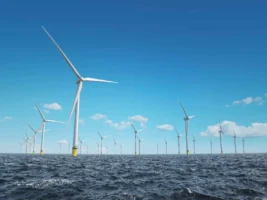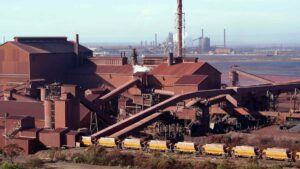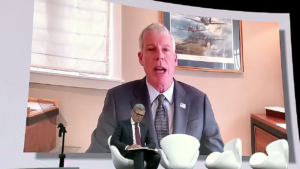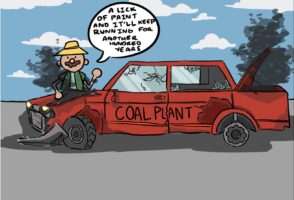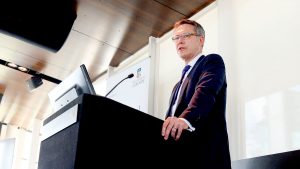ARENA has named the majority hydro-powered state of Tasmania as the location for a second government-backed trial to explore the ability of wind farms to provide crucial grid stabilising services.
The Australian Renewable Energy Agency said on Thursday it would provide $499,120 in grant funding towards a $1 million trial based at Woolworth’s 168MW Musselroe wind farm, to test the technical and commercial potential for wind to provide Frequency Control Ancillary Services (FCAS) on the NEM.
The new trial in Tasmania follows up on last year’s joint effort by ARENA and the Australian Energy Market Operator to deliver the nation’s first FCAS trial at Neoen’s Hornsdale wind farm in South Australia.
That trial, which began in December and finished live testing last month, has so far shown that using wind farms to deliver FCAS is largely technically feasible, although official results are yet to be released.
Those results – due within months – will be keenly anticipated by all energy market players in Australia, where the delivery of FCAS has traditionally been the preserve of the nation’s “baseload” coal and gas-fired power plants.
And, as we have noted in the past, the myth that only “synchronous” fossil fuel generators can provide this so-called “inertia” to the grid is still being used to justify calls for new coal and gas power capacity to be built in Australia as more variable renewable energy is brought online.
ARENA CEO Ivor Frischknecht said the Tasmania trial would address a key question that so far hasn’t been answered; does it make economic and commercial sense for a wind farm to provide ancillary services and participate in the FCAS markets?
Located in the state’s north east, the Musselroe wind farm – one of three owned by Woolnorth Wind Farm Holding, a joint venture owned by Hydro Tasmania and Shenhua Group – produces around 5 per cent of Tasmania’s electrical energy needs annually.
The bulk of the rest of the state’s power comes from its substantial hydro resources, which often see it reach 100 per cent renewables.
ARENA said the Tasmania study would also examine options to store surplus wind energy when constraints on the network prevented it from being used.
“It is hoped this will see many more wind farms beginning to help provide FCAS which batteries and solar farms may also be able to deliver,” Frischknecht said.
General Manager of Woolnorth Wind Farm Holding, Stephen Ross, said the project aimed to identify the true capability of wind power to provide system support, how that might work and what benefit there would be in terms of reliability and security at local and system level.
“So we’re looking at, how can the wind farms provide frequency support services into the broader network,” Ross said in a video interview.
“For everyday consumers, you have a frequency on your electricity supply, and that gets maintained within certain limits. And there’s a lot of work that happens in the background, on the network, to make sure that happens.
At the moment, wind farms don’t provide any frequency support into the network more broadly, and as we get higher penetration of renewable energy into the network, it’s a technical problem that the network needs to solve. So this is a really important part of determining that solution.”
Ross said it would consider a range of options to find the best fit for wind, which could include “chemical” batteries or pumped hydro energy storage.
“This is an opportunity to prove that wind farms can contribute to the stability and reliability of the electricity network,” he said.
“If it proves to be a viable addition for Musselroe, FCAS will also improve the efficiency, commerciality and market importance of our wind farm, and pave the way for others to use this technology,” he said.
For Tasmania, the trial comes as the state heads into another term of Liberal Party leadership, after the Hodgman government was re-elected over the weekend.
Interestingly, a key part of the Tasmanian Liberal Party’s re-election campaign was a promise to opt the state out of the NEM, to protect it from market fluctuations caused by power stations closures or system failures on the mainland.
“With Tasmania charging toward 100 per cent energy self-sufficiency … now is the time to take back our competitive advantage and break away from inflated mainland prices, and to drive down the cost of living of Tasmanians,” Hodgman said in February.
As we noted at the time, however, this would not stop the state from exporting and importing power over its sub-sea Basslink cable – and so would most likely have little bearing on wind farms’ future ability to provide FCAS to the mainland, too.
Indeed, according to a presentation at the Clean Energy Council’s Wind Industry Forum 2018 in Melbourne yesterday, Tasmania is already doing its bit to keep the mainland grid stable.
Bruce Miller, a principal energy systems advisor at Advisian, told the conference that data showed that Tasmania was actually already providing a little bit of frequency control to the mainland, which was “just the opposite to what was intended”.
Miller also said that the his data had found that frequency control of Tasmania, when it was not connected to the mainland, was actually better than the mainland.



